Kazo City, Saitama Prefecture
Warring States Period – Early Edo Period
(Mid 15th Century – Early 17th Century AD)

The shōji moat to the east and south of Gonomaru (from the northwest, 1989).
The bottom of the moat, about 1 meter deep, was further excavated into a groove (some with partitions inside), square, or rectangle about 1 meter deep in order to increase the defenses. The maximum width of 48 meters is one of the largest in Japan.
 Power structure in the late Warring States Period (late 16th century)
Power structure in the late Warring States Period (late 16th century)
Kisai Castle was the front line in the power struggle between the Odawara Hōjō clan and Uesugi Kenshin of Echigo province.
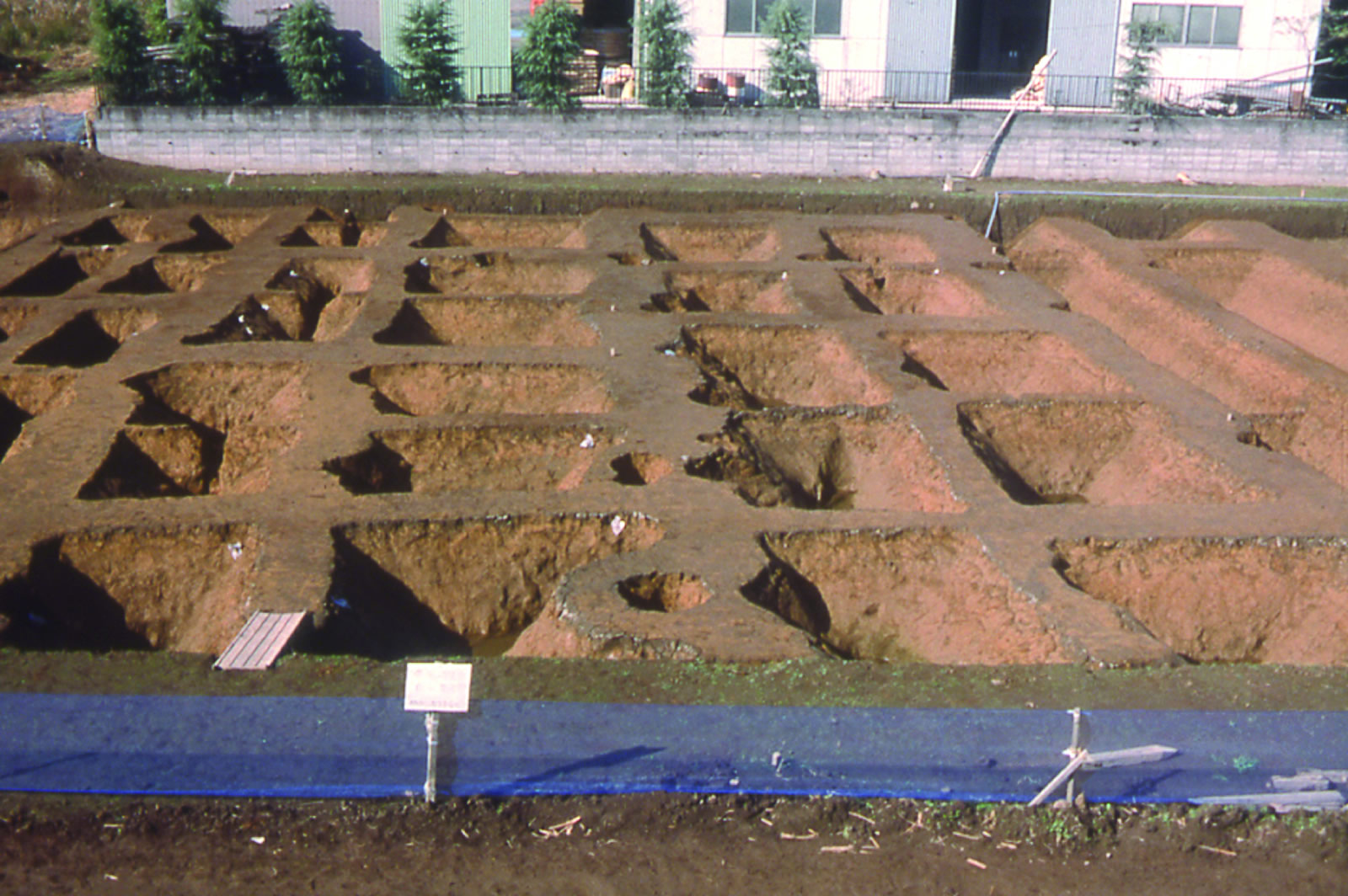
Square pits aligned in an orderly fashion, similar in shape to that of a shoji sliding paper door (view of the southern side of Gonomaru)
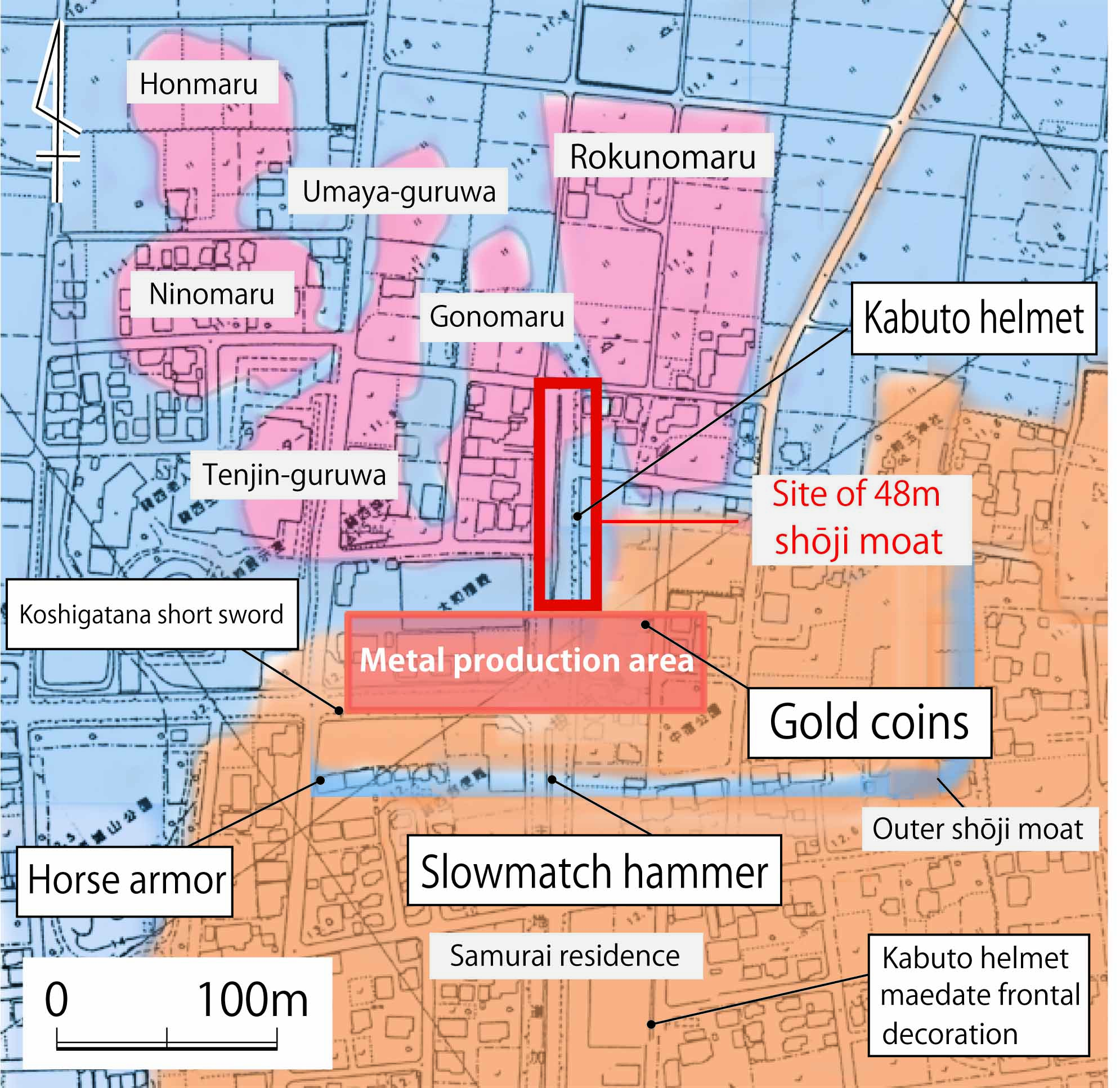
Kisai Castle layout map (edited from an early Edo period map)
The shoji moat was double layered around the castle perimeter and to the south (outer moat). Weapons such as helmets, nagigama (sickles), and horse bridle bit, burnt lacquer bowls, geta (wooden clogs), wooden barrel planks, charred unhulled rice, Japanese millet, millet straw, cotton, 708 coins in bags, and human skulls were excavated from the shoji moat near Gonomaru. Furthermore, 99 round stone disks were unearthed mainly around the bridge and are believed to have been “crushing stones”, to be thrown at the enemy.

Juurokkensuji-style kabuto helmet
The ‘fukigaeshi’ and ‘shikoro’ are made of 213 pieces of small leather tags connected by leather straps or other means; these are coated with black lacquer, with the leather having decayed and only the lacquer coating remaining. The front is equipped with an ‘haraidate’ connecting support for the ‘maedate’ frontal decoration. The top view of helmets made in the Kanto region around this time were oval in shape, but this example is circular in shape, and of the Echigo style. The helmet’s bowl is 26.5cm in width, 24.2cm in width, and 15cm in height.
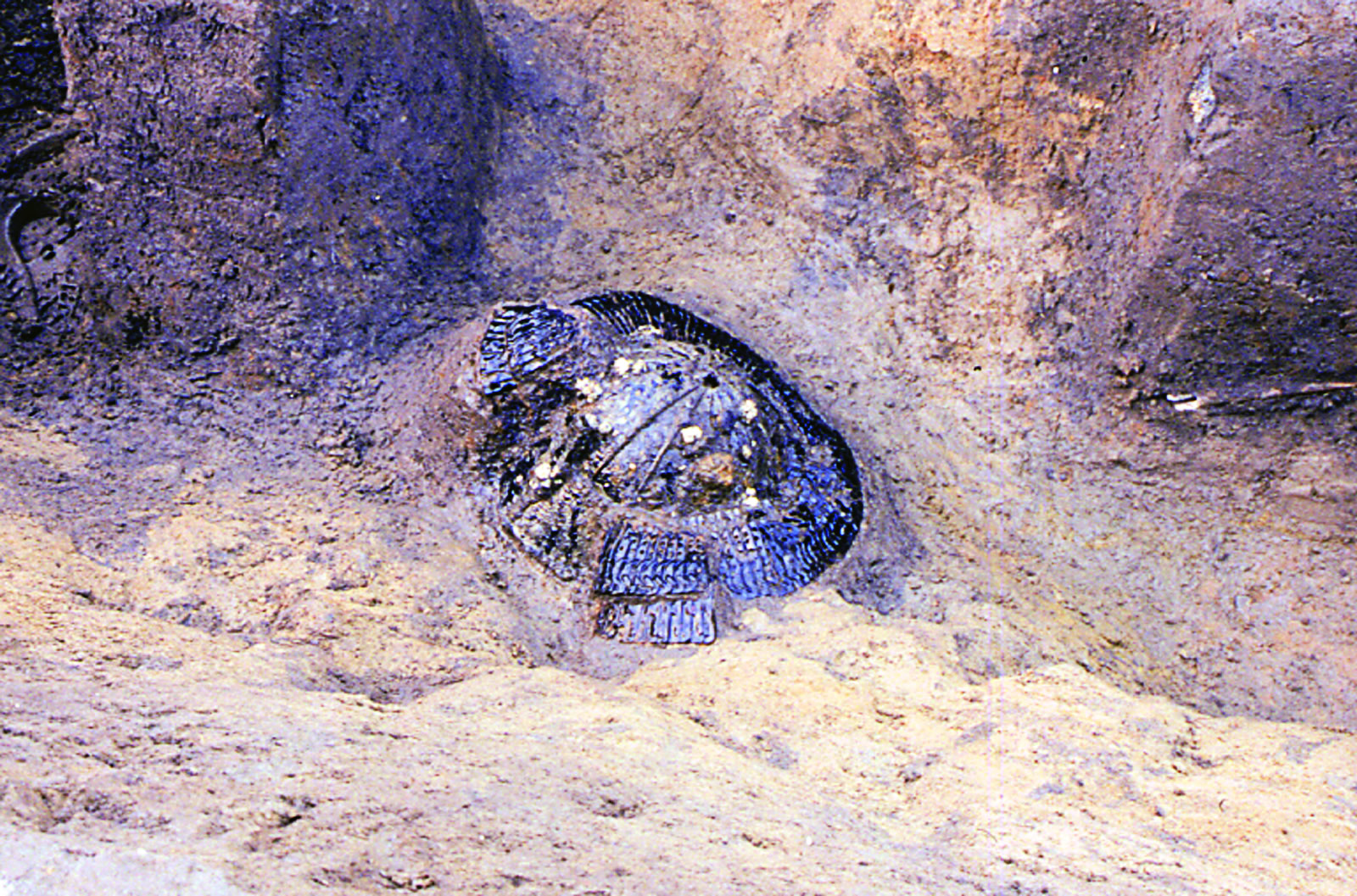
Kabuto helmet at the time of excavation
The helmet was excavated as if it was placed at the bottom of the shoji moat near Gonomaru. This example is said to be a general’s helmet. An Uesugi general may have dropped it during a fierce battle at this site.
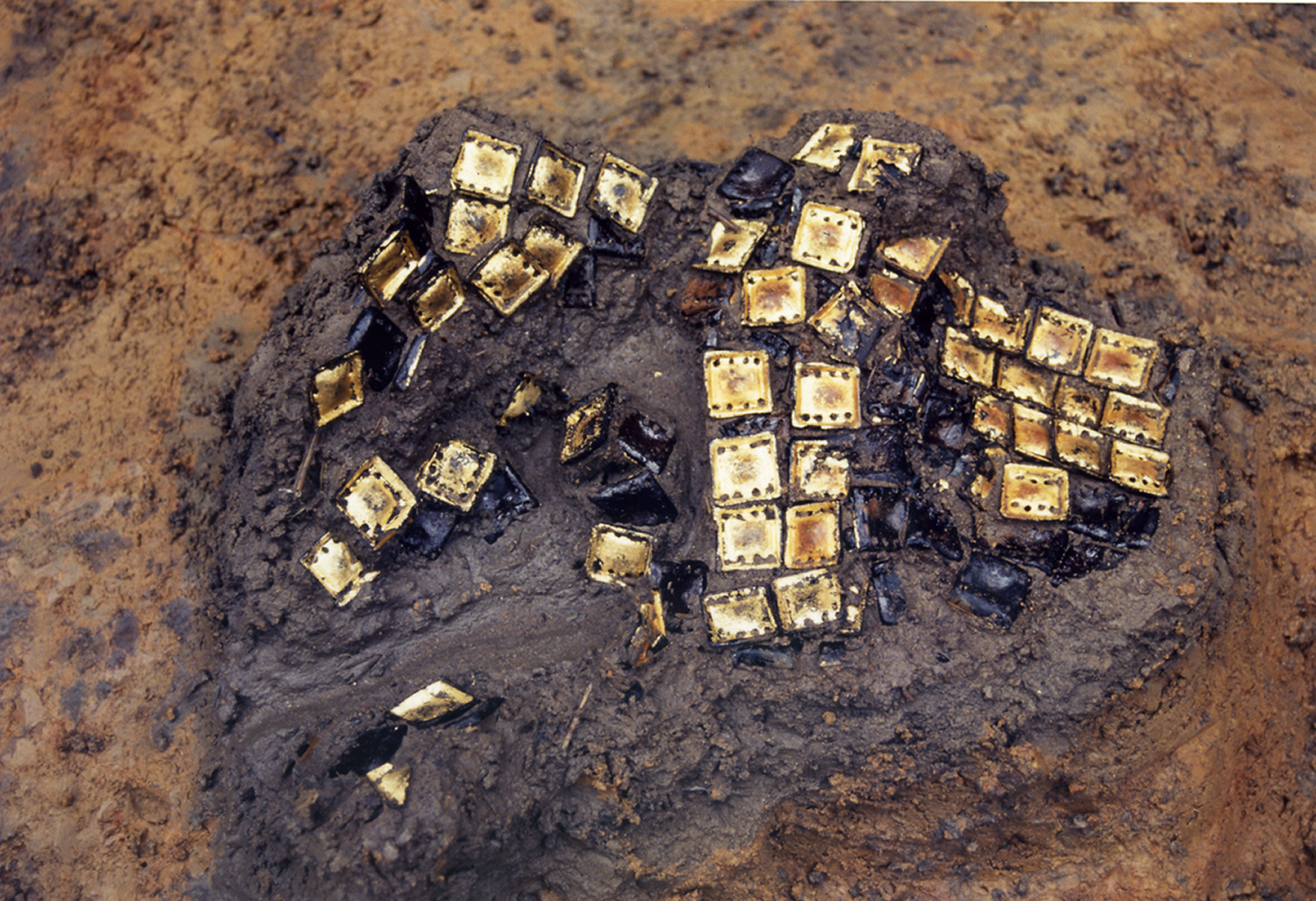

Horse Armor
A folded piece of horse armor with 140 small tags, each measuring 2.4cm square, sewn into cloth was uncovered. The small tags are coated with black lacquer on leather, and gold leaf is applied to the front. A Hōjō military preparation document informs the reader to “wear gold armor on your horse”.
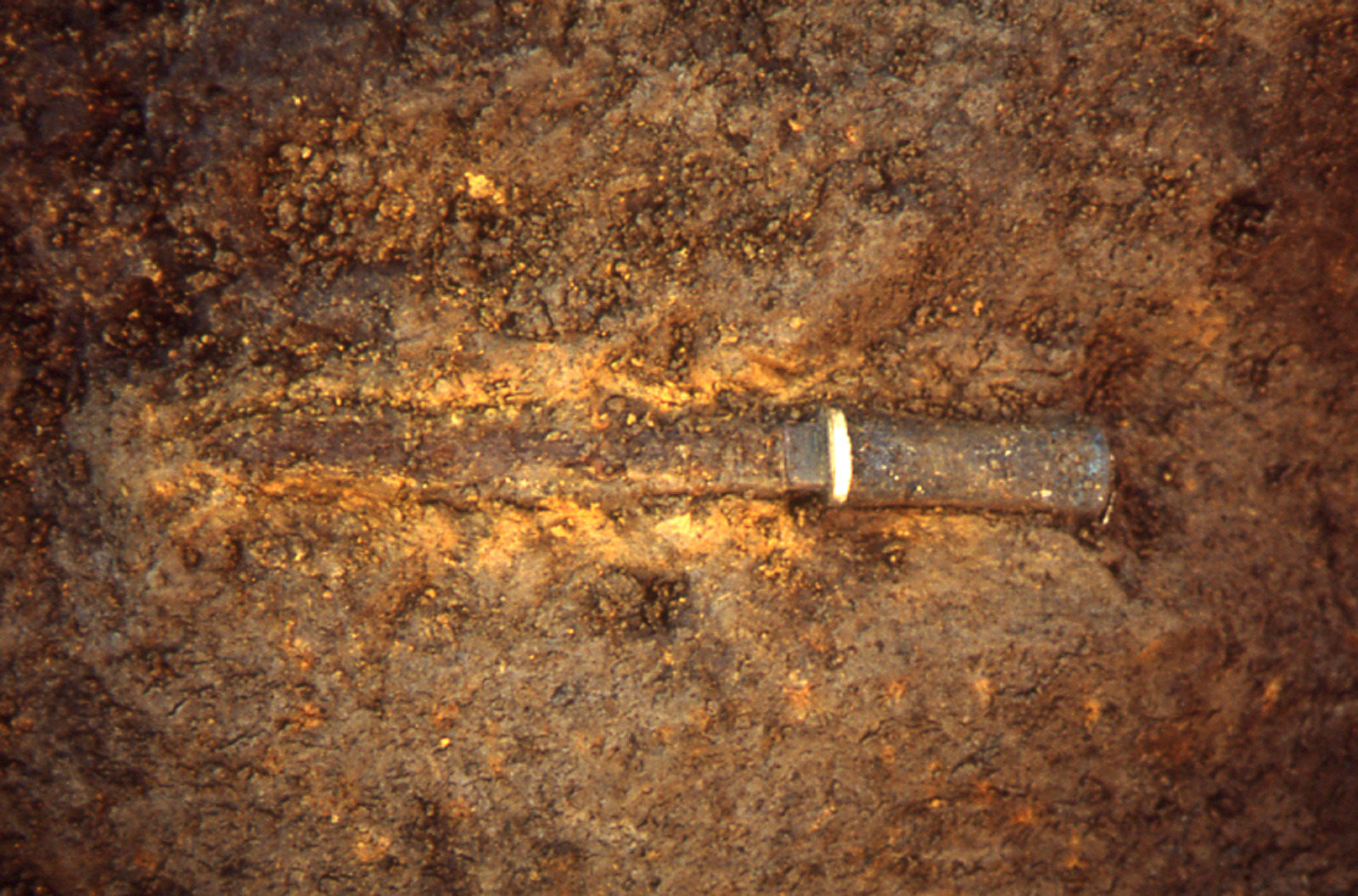
Koshigatana (short guardless sword worn on the hip)
Excavated from the bottom of a ditch between two shoji moats. The handle is gilded with sharkskin and the brim is gilded. The blade of the sword is almost completed rusted. (Length: 30cm)
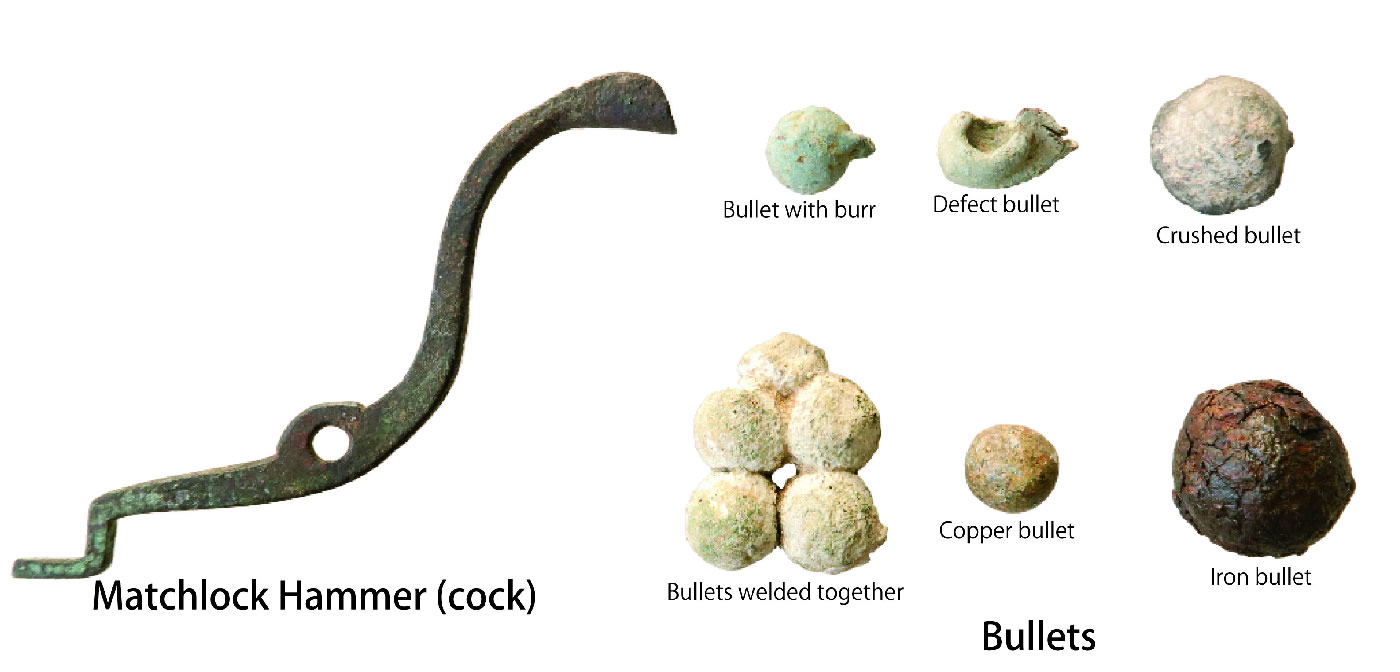
Matchlock Hammer (cock) and Bullets
Matchlock hammers are an important part of matchlock firearms. Firearms appeared in the late Warring States period and were also used at Kisai Castle. Bullets were made of lead, copper, and iron. Of 100 bullets, 6 iron bullets were uncovered, with the rest being made of copper and lead. The length of the matchlock firearm hammer is 10.5cm.
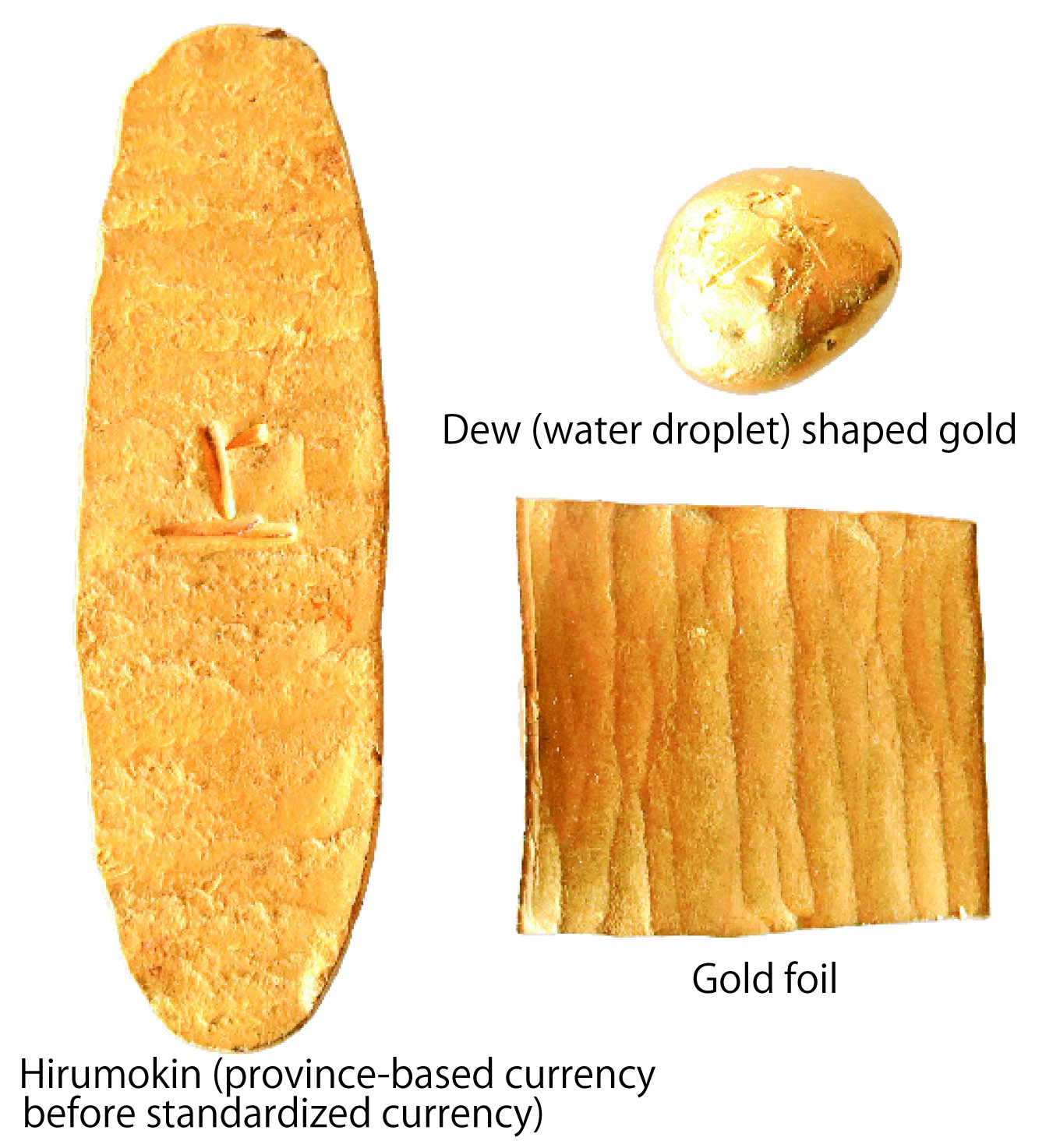
Gold Coins (potential material for metal production)
Before koban (small, standardized coins used in the Edo period) were in circulation, “weight-based coins” whose value was measured by their weight, were used. The gold purity of the hirumokin is as high as 90%, but the hirumokin and gold foil have been further treated to improve the color of the gold. The hirumokin is 4.8 cm long and weighs 15.8 cm (equivalent to one ‘ryō’ gold currency unit).
A castle at the vanguard of the Hojo Clan:
Showcasing intense conflict against Uesugi Kenshin
The Kisai Castle Ruins and Kisai Samurai Residence are located on a slightly elevated area (12m above sea level) in the Kazo Lowland, which is the flood plain of the Tone River, flowing through the center of the Kanto Plain. The Kisai Castle dates from the Warring States to the early Edo Period (mid-15th century to early 17th century), and was first mentioned in documents when Ashikaga Shigeuji, the lord of Koga, captured the Kanto Kanrei faction gathered in Kisai-gun (Kisai Castle) in 1455. In the late Warring States period (1563 and 1574), the castle was captured and set on fire by Uesugi Kenshin on the side of the Odawara Hojō clan. 1590 saw the entry of Tokugawa Ieyasu into the Kanto region, and the Matsudaira and Okubo clans took over the castle, but the castle was eventually abandoned in 1632 in the early Edo period.
According to an early Edo period drawing, the castle portion of Kisai Castle was surrounded by marshland, and consisted of six ‘kuruwa’ areas: Honmaru, Ninomaru, Umaya-guruwa, Tenjin-guruwa, Gonomaru, and Rokunomaru. Although there are no reliable illustrations of the castle from the Warring States period, excavations have confirmed that parts of the castle had been altered.
Excavations have been conducted more than 80 times since 1980, and the western part of the castle and samurai residences were investigated for 13 years starting in 1983. Many remnants such as moats, ditches, bridges, wells, and clay pits were found, as well as daily-life artifacts such as ceramics and lacquerware.
The most notable of the remnants uncovered is the ‘shoji’ moat (resembling the lattice of a shoji sliding paper door). Shoji moats are often found in Hojō clan castles, such as Odawara Castle and Yamanaka Castle. The shoji moat found south of Kisai Castle is one of the largest in Japan at 48 meters wide. In 1563, Uesugi Kenshin went to rescue Matsuyama Castle, which was besieged by Hojō Ujiyasu and Takeda Shingen, but was unable to reach the castle in time.
Noteworthy among the artifacts found is a ‘kabuto’ helmet that retains its ‘shikoro’ (suspended neck guard) and ‘fukigaeshi’ (wing-like projections), a fairly rare find in a site like this. In addition, horse armor and a matchlock sheath, a part of a matchlock gun, were excavated from the outer moat; a the frontside of a helmet was excavated on the south side of the outer moat; and about 100 bullets were excavated from the whole excavation area.
In the southern area of the fortification, three gold coins and pottery with molten material on them were excavated. Scientific analysis has revealed that metal production was conducted here to create alloys that were used as materials for armor and decoration. This has been previously confirmed in the castles of warring feudal lords and large cities throughout Japan, but these results also show that this was widespread in small-scale castles such as Kisai Castle as well. As Kisai Castle is located in a low-lying area, a wide variety of artifacts were excavated in good condition. The large shoji moat, helmets, gold horse armor, and gold frontal stands bring to mind the glamorous warriors who fought in front-line castles. It is also an important site for exploring life and livelihood in the castle from the Warring States Period to the beginning of the Edo Period. (Hideyuki Shimamura)
Adapted from Hakkutsu sareta Nihon rettō 2023 [Excavations in the Japanese Archipelago, 2023] (Bunkachō [Agency for Cultural Affairs], ed., Kyodo News, 2023).

